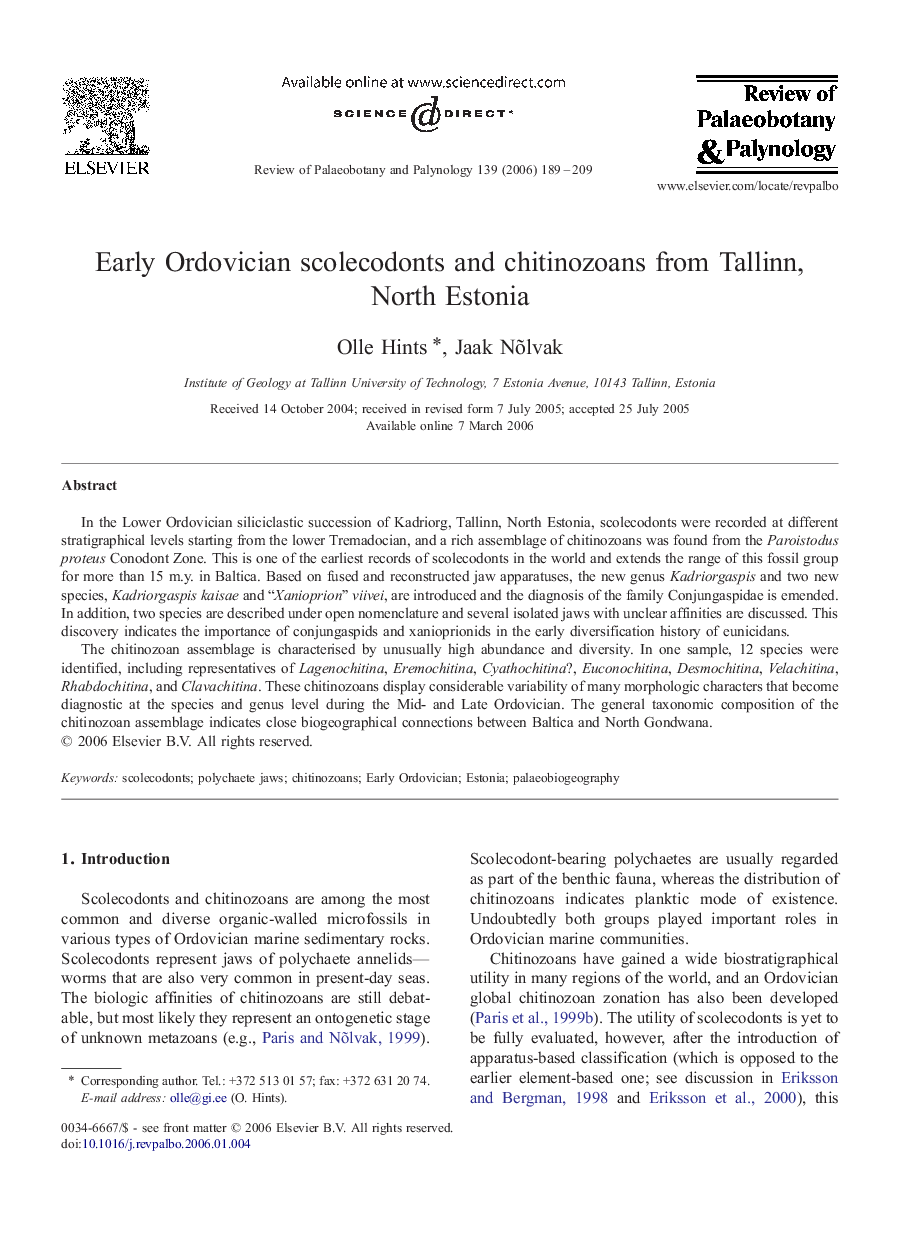| Article ID | Journal | Published Year | Pages | File Type |
|---|---|---|---|---|
| 4751306 | Review of Palaeobotany and Palynology | 2006 | 21 Pages |
In the Lower Ordovician siliciclastic succession of Kadriorg, Tallinn, North Estonia, scolecodonts were recorded at different stratigraphical levels starting from the lower Tremadocian, and a rich assemblage of chitinozoans was found from the Paroistodus proteus Conodont Zone. This is one of the earliest records of scolecodonts in the world and extends the range of this fossil group for more than 15 m.y. in Baltica. Based on fused and reconstructed jaw apparatuses, the new genus Kadriorgaspis and two new species, Kadriorgaspis kaisae and “Xanioprion” viivei, are introduced and the diagnosis of the family Conjungaspidae is emended. In addition, two species are described under open nomenclature and several isolated jaws with unclear affinities are discussed. This discovery indicates the importance of conjungaspids and xanioprionids in the early diversification history of eunicidans.The chitinozoan assemblage is characterised by unusually high abundance and diversity. In one sample, 12 species were identified, including representatives of Lagenochitina, Eremochitina, Cyathochitina?, Euconochitina, Desmochitina, Velachitina, Rhabdochitina, and Clavachitina. These chitinozoans display considerable variability of many morphologic characters that become diagnostic at the species and genus level during the Mid- and Late Ordovician. The general taxonomic composition of the chitinozoan assemblage indicates close biogeographical connections between Baltica and North Gondwana.
